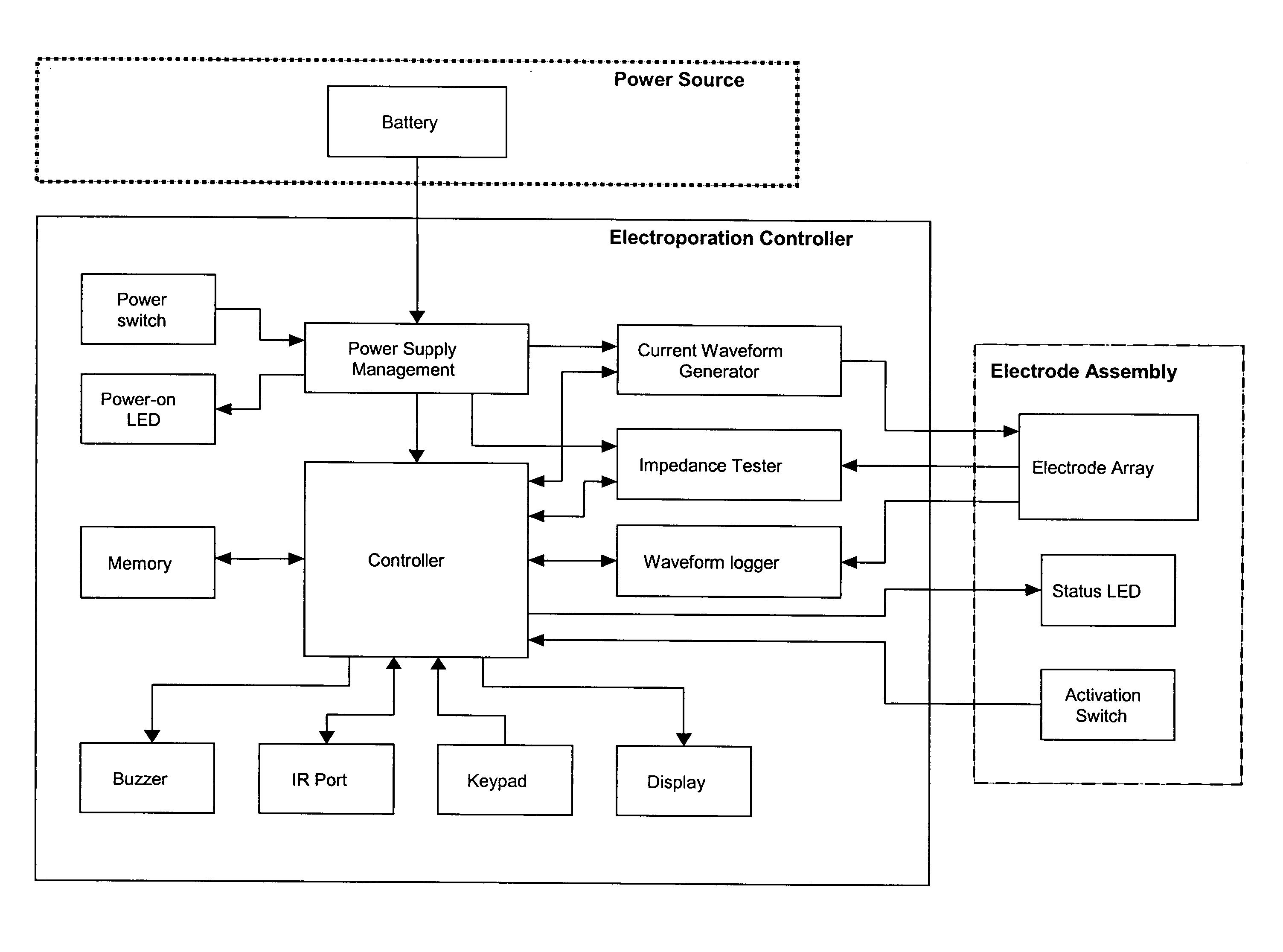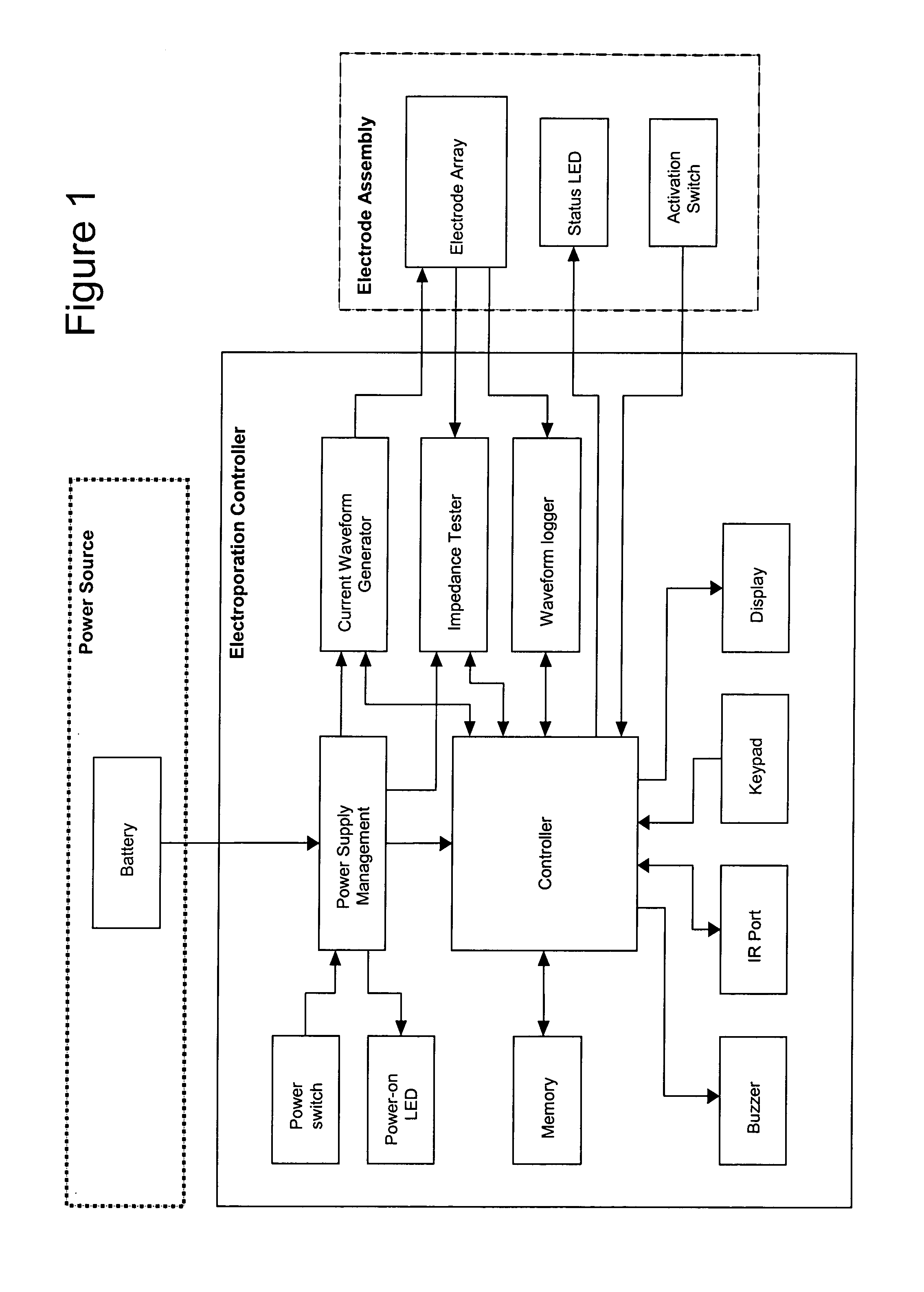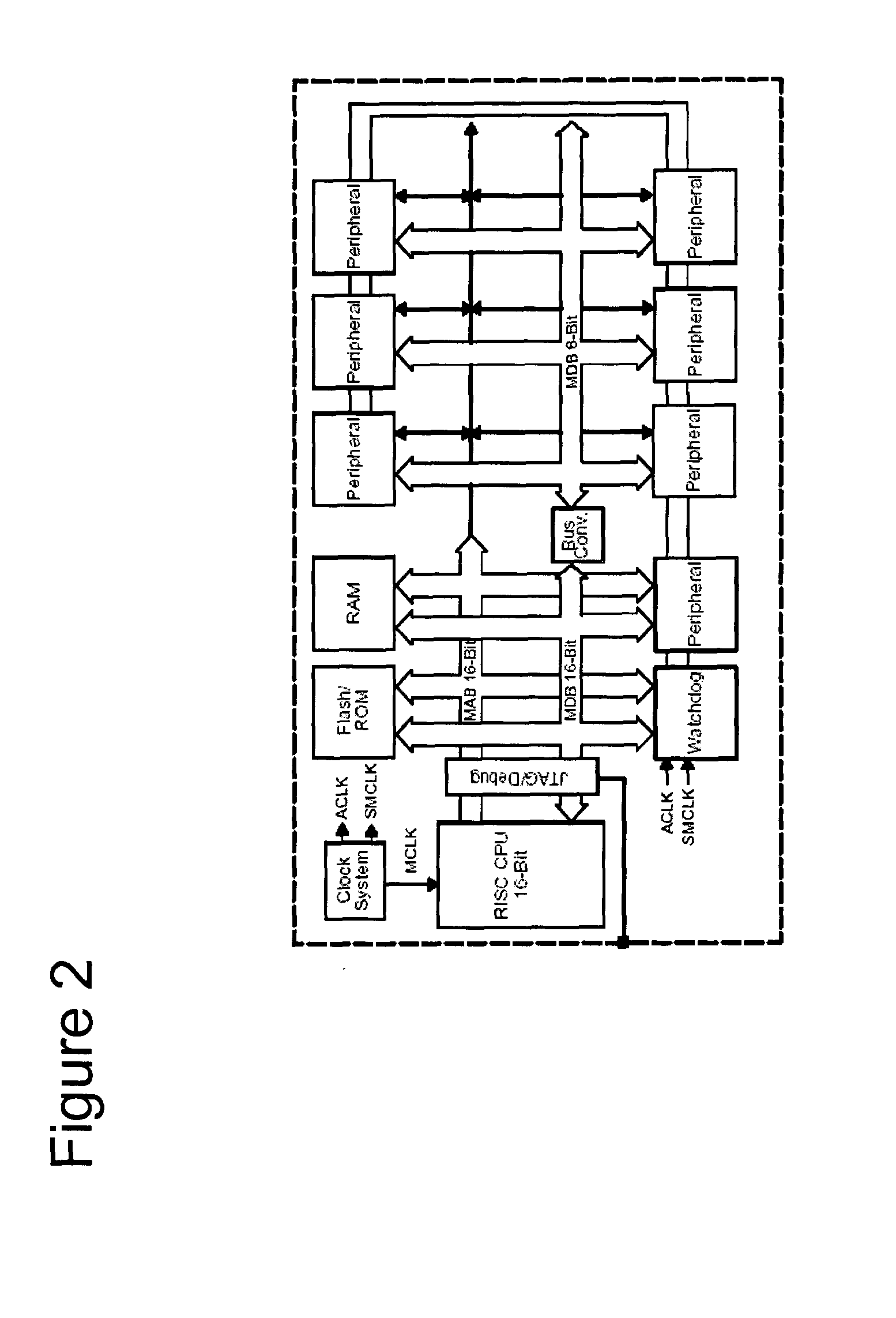Constant current electroporation device and methods of use
a constant current electroporation and electroporation device technology, applied in the field of constant current electroporation, can solve the problems of inability to reseal the electropore, limited application of plasmid transfer technology in living organisms, and inability to use electroporation, so as to facilitate the introduction of a macromolecule into cells, eliminate cross-contamination, and increase the electroporation efficiency
- Summary
- Abstract
- Description
- Claims
- Application Information
AI Technical Summary
Benefits of technology
Problems solved by technology
Method used
Image
Examples
example 1
Operation of the Electro-Kinetic Device (“EKD”)
The operation of the Controller is shown in FIGS. 19 and 20, which illustrate a preferred operation sequence of the EKD. In a preferred embodiment, an information display panel LCD displays each step of the sequence to promote user-friendly operation. Prior to operating the EKD, the electrode assembly is firmly inserted into the target tissue.
First, the power is turned on and the EKD is booted up. The firmware remains in the idle state until input is received from the user. To start an electroporation sequence, a password is entered to obtain an introductory prompt on the LCD. At this point, the handle assembly activator switch is pressed. The user then enters a number, preferably an animal ID number, which is logged with the data of every pulse stored for later download. The number is preferably entered using a numeric keypad. The user is then prompted, via a “beep” from the buzzer, to press the activation switch to continue the el...
example 2
Data Acquisition and Storage
The EKD software or firmware enables real time data acquisition and storage in non-volatile memory. FIG. 21 illustrates a first portion of data that may be collected during the electroporation process. The first section of the file header contains the file name and the animal number. The columnar data describes the pulse in sequence, the wait time before pulsing, the pulse width, and the pulse current for each of the five electrodes. FIG. 22 illustrates a second portion of data, which identifies the configuration of each electrode during a given pulse sequence. Reading vertically for the first pulse, electrode 1 is positive, 2 is off, 3 is negative, 4 is negative, and 5 is off. The electrode configurations for pulses 2, 3, 4, and 5 constitute the remainder of the data columns. FIG. 23 illustrates a formatted version of a third portion of raw data for the same electroporation, which consists of 10 time points, about 20 ms apart, for the five electrodes. ...
example 3
Plasmid Design, Delivery Methods, and Experimental Animals
Plasmid construction. The plasmid pSP-SEAP (5019 bp) is a muscle specific expression plasmid for secreted embryonic alkaline phosphatase (“SEAP”). The promoter is SPc5-12, a strong, muscle specific, synthetic promoter (Li et al., 1999), and the 3′ ends of SEAP transcripts are defined by the SV40 late poly(A) signal. The plasmid was constructed by inserting a 394 bp Acc65I-HindIII fragment, containing the 334 bp SPc5-12 promoter sequence, between the Acc65I and HindIII sites of pSEAP-2 Basic Vector (Clontech Laboratories, Inc., Palo Alto, Calif.).
Electroporation conditions. Square wave pulses were used in all experiments. Electroporation conditions are stated individually for each experiment. In all cases, constant current was used at 0.4 to 1.0 Amps, with 3 or 5 pulses, for 52 milliseconds / pulse, and with one second between pulses. The EKD electroporation device contained a circular array (1 cm diameter) of five equally s...
PUM
 Login to View More
Login to View More Abstract
Description
Claims
Application Information
 Login to View More
Login to View More - R&D
- Intellectual Property
- Life Sciences
- Materials
- Tech Scout
- Unparalleled Data Quality
- Higher Quality Content
- 60% Fewer Hallucinations
Browse by: Latest US Patents, China's latest patents, Technical Efficacy Thesaurus, Application Domain, Technology Topic, Popular Technical Reports.
© 2025 PatSnap. All rights reserved.Legal|Privacy policy|Modern Slavery Act Transparency Statement|Sitemap|About US| Contact US: help@patsnap.com



